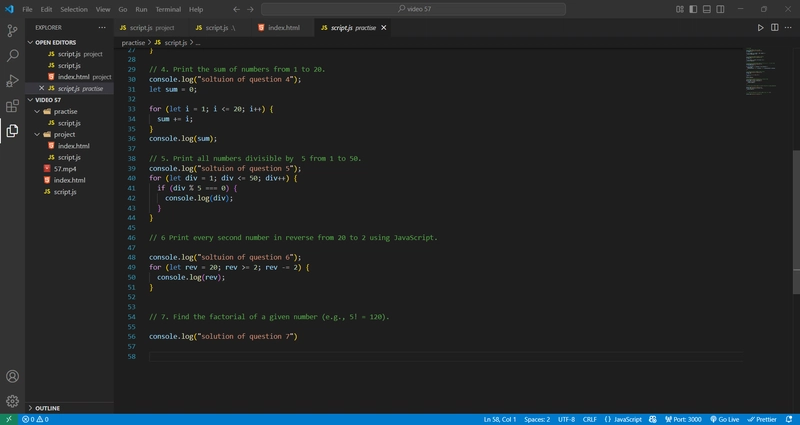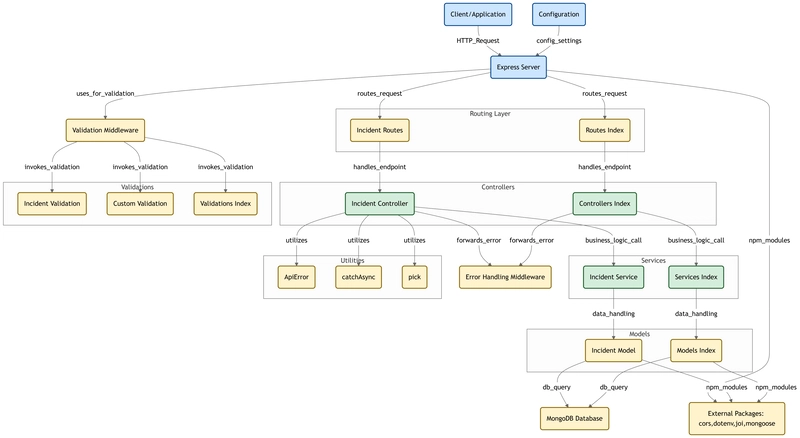The YAGNI Principle
Before moving into the DRY principle, let's understand the goals of a good programmer: Solving Problems Writing Amazing Code Maintainsability Simplicity Cleanliness Optimization Why write clean, simple, and maintainable code? You're writing for humans. Whether it's for a team. When you revisit your code 6 months later, it must be understandable by you. Is there a standard way to write clean code? Yes! Here are some principles: DRY KISS YAGNI SOLID We often want our code to handle every imaginable situation or future feature. However, this mindset leads to bloated code, wasted time, and unnecessary complexity. This is where YAGNI comes to the rescue. Let's Deep Dive... In this article, we will cover: What is YAGNI? Common Pitfalls of Ignoring it Why is it Important? How to Apply it? When Not to Use it? Disadvantages of YAGNI What is YAGNI? Only build something when you really need it - not just because you think you might need it later. The YAGNI principle is a core concept in software development, especially within agile methodologies. It simply means: Focus on what’s needed right now. Don’t waste time adding features you might need "someday" but aren't required today. Example Codes: Non-DRY vs DRY Non-YAGNI (Violating YAGNI) class PaymentProcessor { private: std::string paymentMethod; public: PaymentProcessor(std::string method) : paymentMethod(method) {} void processPayment(double amount) { if (paymentMethod == "CreditCard") { std::cout
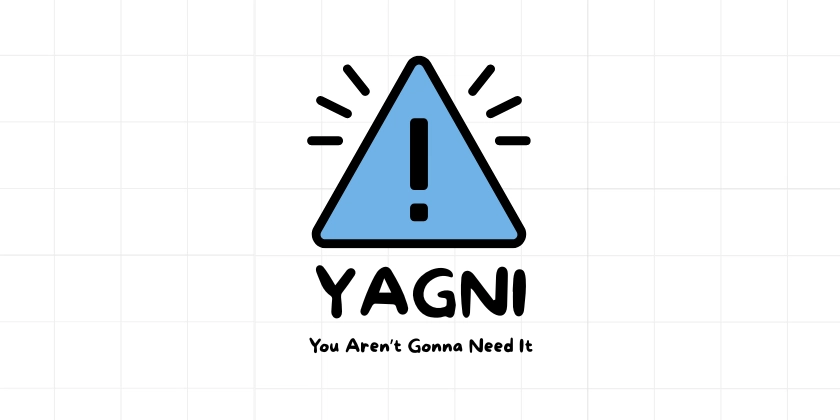
Before moving into the DRY principle, let's understand the goals of a good programmer:
- Solving Problems
- Writing Amazing Code
- Maintainsability
- Simplicity
- Cleanliness
- Optimization
Why write clean, simple, and maintainable code?
You're writing for humans.
- Whether it's for a team.
- When you revisit your code 6 months later, it must be understandable by you.
Is there a standard way to write clean code?
Yes! Here are some principles:
- DRY
- KISS
- YAGNI
- SOLID
We often want our code to handle every imaginable situation or future feature.
However, this mindset leads to bloated code, wasted time, and unnecessary complexity.
This is where YAGNI comes to the rescue.
Let's Deep Dive...
In this article, we will cover:
- What is YAGNI?
- Common Pitfalls of Ignoring it
- Why is it Important?
- How to Apply it?
- When Not to Use it?
- Disadvantages of YAGNI
What is YAGNI?
Only build something when you really need it - not just because you think you might need it later.
The YAGNI principle is a core concept in software development, especially within agile methodologies.
It simply means:
- Focus on what’s needed right now.
- Don’t waste time adding features you might need "someday" but aren't required today.
Example Codes: Non-DRY vs DRY
Non-YAGNI (Violating YAGNI)
class PaymentProcessor {
private:
std::string paymentMethod;
public:
PaymentProcessor(std::string method) : paymentMethod(method) {}
void processPayment(double amount) {
if (paymentMethod == "CreditCard") {
std::cout << "Processing payment of $" << amount << " via Credit Card." << std::endl;
} else if (paymentMethod == "DebitCard") {
std::cout << "Processing payment of $" << amount << " via Debit Card." << std::endl;
} else if (paymentMethod == "PayPal") {
// Unnecessary feature
std::cout << "Processing payment of $" << amount << " via PayPal." << std::endl;
} else if (paymentMethod == "Crypto") {
// Unnecessary feature
std::cout << "Processing payment of $" << amount << " via Cryptocurrency." << std::endl;
} else {
std::cout << "Payment method not supported." << std::endl;
}
}
};
int main() {
PaymentProcessor processor("CreditCard");
processor.processPayment(100);
PaymentProcessor invalidProcessor("PayPal");
invalidProcessor.processPayment(58);
}
- Adds unnecessary features (PayPal and Crypto) not requested.
- Wastes development time on irrelevant features.
- Increases complexity of the codebase.
- Risk of disqualification in interviews by violating YAGN




































































































































































![[The AI Show Episode 145]: OpenAI Releases o3 and o4-mini, AI Is Causing “Quiet Layoffs,” Executive Order on Youth AI Education & GPT-4o’s Controversial Update](https://www.marketingaiinstitute.com/hubfs/ep%20145%20cover.png)














































































































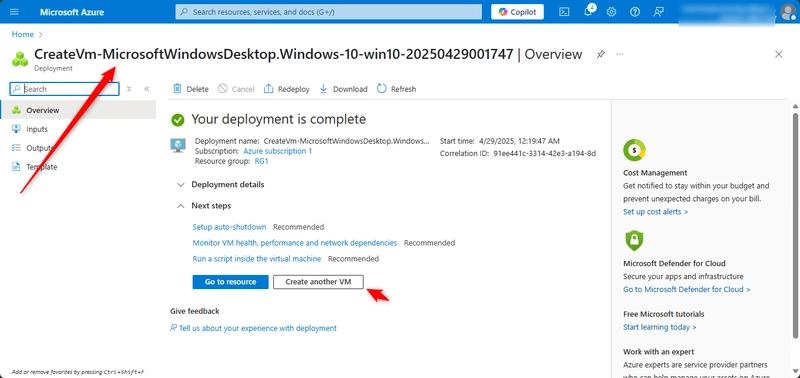

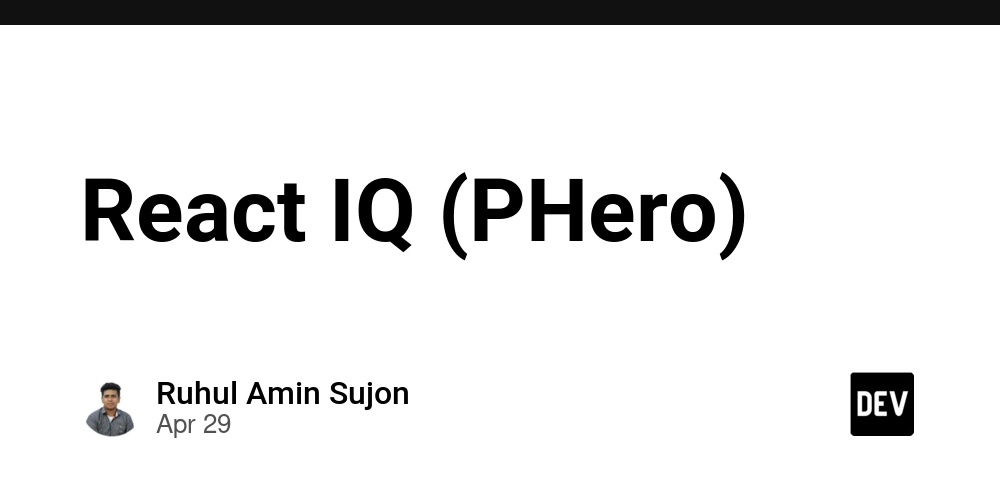


















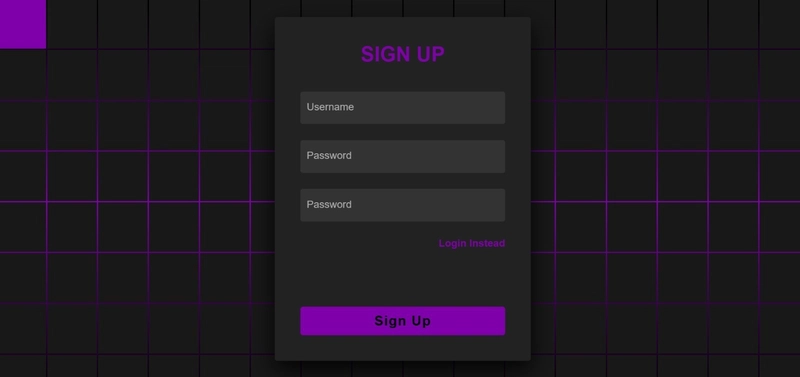





































































































































_NicoElNino_Alamy.jpg?width=1280&auto=webp&quality=80&disable=upscale#)
















































































































![Standalone Meta AI App Released for iPhone [Download]](https://www.iclarified.com/images/news/97157/97157/97157-640.jpg)
































































































